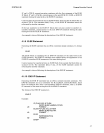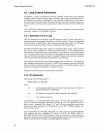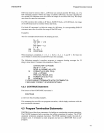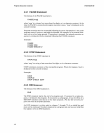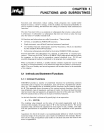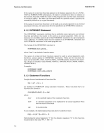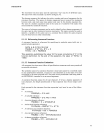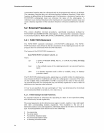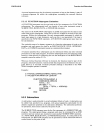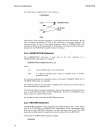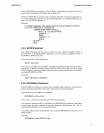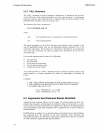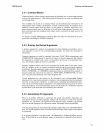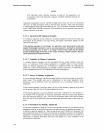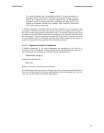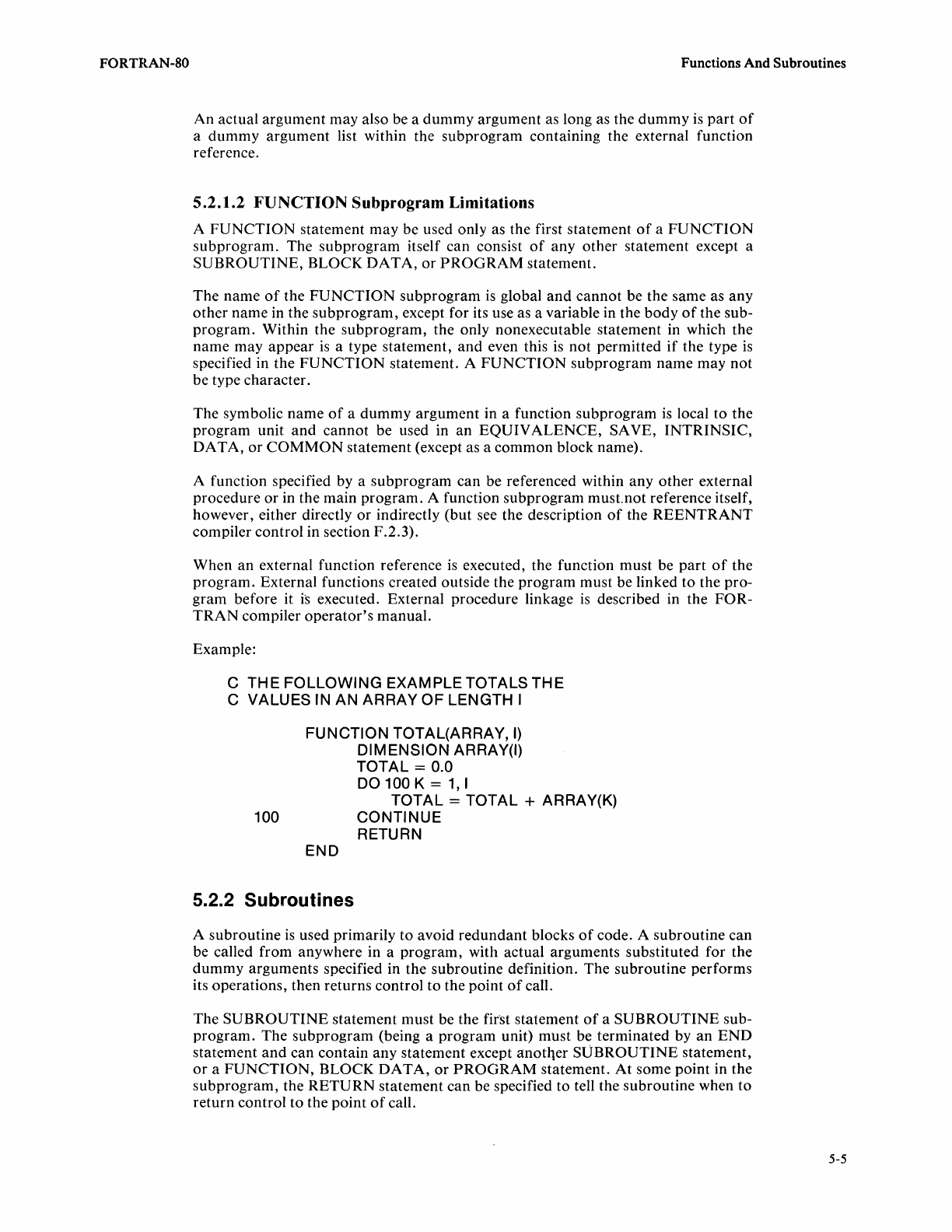
FORTRAN-SO Functions And Subroutines
An actual
argument
may also be a
dummy
argument as long as the
dummy
is
part
of
a
dummy
argument list within the subprogram containing the external function
reference.
5.2.1.2
FUNCTION
Subprogram
Limitations
A
FUNCTION
statement
may
be used only as the first statement
of
a
FUNCTION
subprogram.
The
subprogram
itself can consist
of
any
other
statement except a
SUBROUTINE,
BLOCK
DATA,
or
PROGRAM
statement.
The
name
of
the
FUNCTION
subprogram
is
global
and
cannot
be the same as
any
other
name in the
subprogram,
except for its use as a variable in the
body
of
the sub-
program.
Within the
subprogram,
the only nonexecutable statement in which the
name may
appear
is
a type statement,
and
even this
is
not
permitted
if
the type
is
specified in the
FUNCTION
statement. A
FUNCTION
subprogram
name
may
not
be type character.
The symbolic
name
of
a
dummy
argument
in a function
subprogram
is
local to the
program
unit
and
cannot
be used in an
EQUIVALENCE,
SAVE,
INTRINSIC,
DATA,
or
COMMON
statement (except as a
common
block name).
A function specified by a subprogram
can
be referenced within any
other
external
procedure
or
in the main
program.
A function
subprogram
must.not reference itself,
however, either directly
or
indirectly (but see the description
of
the
REENTRANT
compiler control in section F.2.3).
When
an
external function reference
is
executed, the function must be
part
of
the
program.
External functions created outside the
program
must be linked
to
the pro-
gram before it
is
executed. External procedure linkage
is
described in the
FOR-
TRAN
compiler
operator's
manual.
Example:
C THE FOLLOWING EXAMPLE TOTALS THE
C VALUES IN AN ARRAY
OF
LENGTH I
FUNCTION
TOTAL(ARRAY,
I)
DIMENSION ARRAY(I)
TOTAL
= 0.0
DO
100 K =
1,
I
TOTAL
= TOTAL + ARRAY(K)
100 CONTINUE
RETURN
END
5.2.2 Subroutines
A subroutine
is
used primarily
to
avoid
redundant
blocks
of
code. A subroutine can
be called from anywhere in a
program,
with actual arguments substituted for the
dummy
arguments specified in the subroutine definition. The subroutine performs
its operations, then returns control
to
the point
of
call.
The
SUBROUTINE
statement
must
be the fitst statement
of
a
SUBROUTINE
sub-
program.
The
subprogram
(being a
program
unit) must be terminated by
an
END
statement
and
can contain any statement except
anotqer
SUBROUTINE
statement,
or
a
FUNCTION,
BLOCK
DATA,
or
PROGRAM
statement.
At
some point in the
subprogram,
the
RETURN
statement can be specified
to
tell the subroutine when
to
return
control
to
the point
of
call.
5-5



